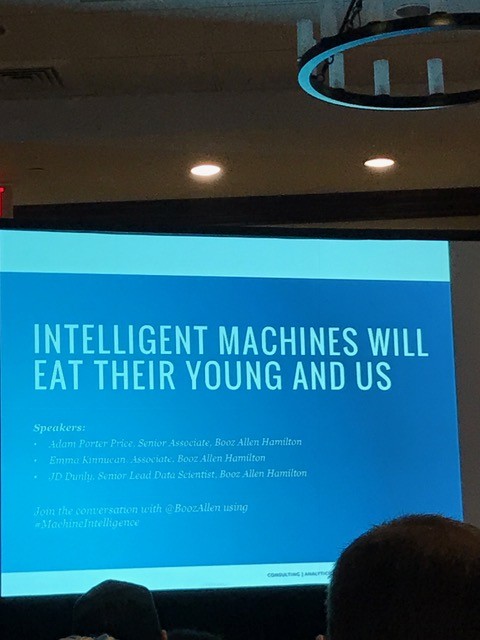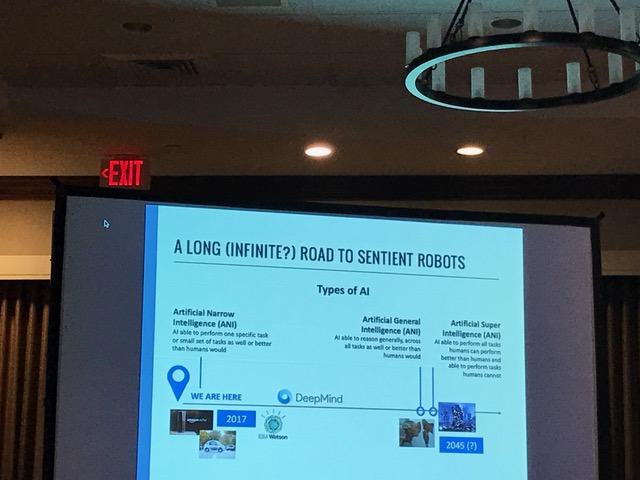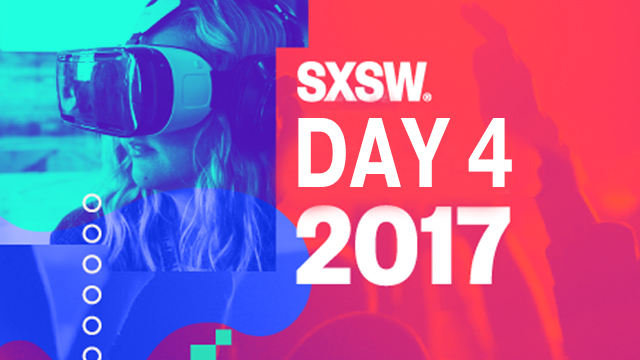SXSW Day 4: The top 10 things I’ve learned at SXSW this year.
By Stephani Estes, Vice President, Digital Strategy and Implementation Director
I’m boiling down 4 days of sessions, exhibits, meet-ups, keynotes, brunches, and happy hours into a convenient 10-item listicle. Not just because I think it will make for easy reading, but c’mon folks – I just spent 4 days at sessions, exhibits, meet-ups, keynotes, brunches, and happy hours. Paragraphs are hard right now.
1. Perhaps no one has mastered the brand-as-resource approach as well as Planned Parenthood. One of the original content marketers, Planned Parenthood became the go-to resource for a generation of teens and young adults seeking sex education content online. Through partnerships with tech companies like Tumblr, Planned Parenthood has also used crucial information about their target audience to tailor their user experience, like creating mobile appointments for teens who would much rather schedule through an app versus talking to someone on the phone.
2. Data alone isn’t enough to persuade people – data makes sense, but stories make meaning. So yeah, that means sometimes excel charts copy and pasted into PowerPoint won’t cut it. When presenting your data, Nancy Duarte and Scott Berinato highlight the importance of the 4 Cs:
a. Context – who is your audience? How do they consume information?
b. Content – data starts with hypotheses; stories start with empathy. Talk to another person with a different perspective about your data.
c. Construct – the human brain is wired for contrast. Using the traditional story arc for your data can help communicate your points.
d. Connect – use your story as a thread or as an anecdotal unit.
3. Even though social media has allowed us to share information globally in a matter of seconds, the reality is we only see a tiny part of it. Platforms like Facebook use algorithms to show us more of the content we like in order to keep us on the platform longer, and this results in echo chambers – where the views we hold are reflected back to us in the content we consume. Claire Woodcock provided a framework for breaking these echo chambers – and it includes the algorithm used by Netflix to help us find content that we’re open to, but isn’t subject to our filter bubbles.

4. It gets cold in Austin. Colder than this Chicagoan expected. And that means you need to find an emergency scarf.

5. We’re living in the age of artificial intelligence, and that has certainly been the hot topic here at SXSW this year. And depending on who you ask, we’re either inching closer towards Skynet (according to Elon Musk and Stephen Hawking), or we’ve got more to fear from the current administration then evil, sentient robots (according to Andrew Ng). Either way, businesses exploring AI should follow a few simple principles, shared by Booz Allen Hamilton, if they want to avoid a potential Terminator-type* situation:
a. Objectives – make sure the objectives of your intelligent machine match the objectives of your organization.
b. Oversight – have humans overseeing that the machines are pursuing those objectives in a way that is consistent with your values.
c. Exploration – find ways to allow intelligent machines to learn and explore with minimal risk.


*All information pointing to any Terminator-type event as being highly unlikely. We’re a long way away from sentient robots. I mean, Siri still can’t understand 87% of my requests.
6. With AI growing so rapidly, one of the biggest challenges the industry is facing is a talent shortage. To close this gap, we need to focus not only on STEM education, but STEAM as well – Science, Technology, Engineering, Arts, and Math. Without the Arts, which help us understand aspects like user experience and design, we risk stunting the adoption growth of this technology, since no one wants to use tech with a poor user experience. And the reality is, this education gap doesn’t just impact the “tech sector”. As Suzan DelBene, Congresswoman from Washington state’s 1st Congressional District put it: technology is no longer a nice-to-have; it’s our infrastructure. It’s not a separate sector; it’s in every sector.
7. Melissa takes the best SXSW badge photos. No, really. She does.
8. TALKING DOGS ARE REAL. THIS IS NOT A DRILL, PEOPLE, THIS IS REAL. Thad Starner and Melody Jackson from Georgia Tech shared the amazing state of wearable technology today. And that includes wearable tech for assistance dogs, like Lazer, who was able to touch a sensor on her vest which plays a recording to alert others that her human needs help (she was talking, people!). Wearables have evolved beyond the Google glasses, and they’re not just for man’s best friend and nerdy dudes at MIT bars – this technology now has the potential to not only help firefighters and nurses do their jobs better, it can enhance a brand’s ability to provide a more customized experience through instantaneous information sharing.

9. 360 video has arrived. Big brands like YouTube, and smaller brands like the city of Denton, TX are embracing this immersive channel to provide deeper video experiences for consumers. The rise of VR and platforms like YouTube and Facebook including 360 capabilities are scaling this experience for consumers. And believe me – watching a 360 live band video from Denton makes for a super cool video experience (even if you do look a little silly watching through a VR headset).

10. During a rainy SXSW, it’s not content that’s king – it’s the person selling the umbrellas. And let me tell you – it’s a seller’s market. As much as I’ve enjoyed my time at SXSW this year, I’m really hoping Stella doesn’t keep me from getting home tomorrow. What was your favorite thing about SXSW this year?
More Insights
- March 12, 2017 SXSW Day 3: Here come the bots.
- March 11, 2017 SXSW Day 2: “Old school” digital.
- March 10, 2017 SXSW Day 1: Truth.
